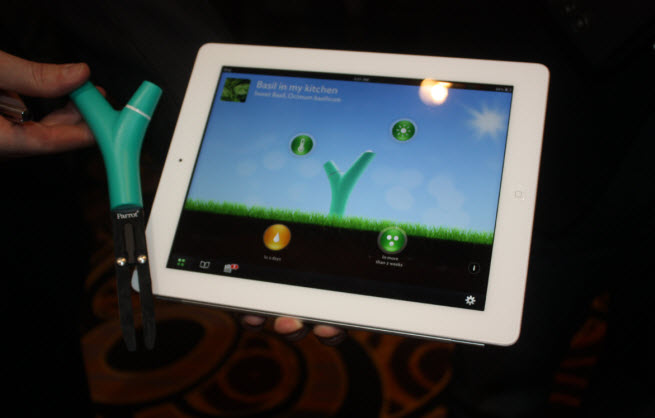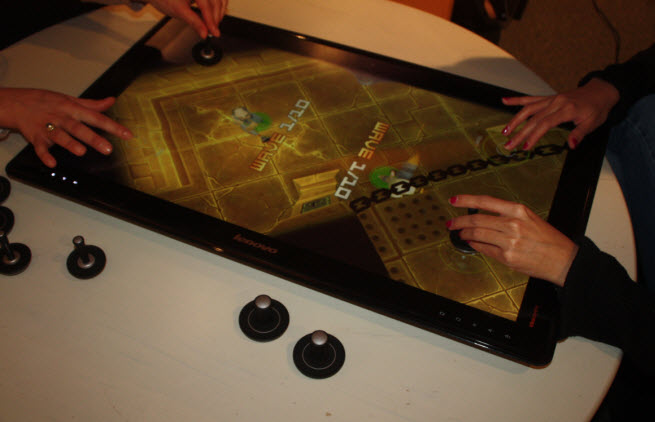Regional changes push China upward
Another changing of the guard is happening across the regions that produce technology. Microsoft surrendered its booth to a Chinese company, Hisense, which is fast becoming one of the major consumer electronics companies of the world. TCL, Changhong, Huawei, Haier, and ZTE had prominent booths at the main hall and the South Hall. China’s Lenovo is already a giant on the world’s stage as the largest maker of PCs on the planet. TCL has acquired the RCA and Thomson brands and unveiled its Blade TV thin model at the show.
No longer are the Chinese relegated to tiny booths in international trade sections of CES. One of these companies might just be the next Samsung, which is only 10 years younger in terms of maturity in the consumer electronics industry. Pretty soon, the Chinese will be taking on the Japanese and the Koreans. — Dean Takahashi
Sensors are making gadgets smarter and bringing forth the internet of things
Smart devices will get smarter because they are connected to sensors, such as accelerometers made by companies such as Invensense, which makes the motion-sensors in popular game consoles such as the Wii.
As devices become more context aware, the label of “smart” will begin to take on new meaning. In the past, it simply meant that a device, such as a smartphone or Smart TV, was connected to the Internet. Soon, it will mean that the device will know much more about what is relevant to you because it knows your context, location, and tastes. Motion-sensing accelerometers are embedded in everything — things like the Wii U game console and the Hapi Fork from Hapilabs. But new sensors such as eye-trackers have made their way into experimental TVs from Haier. Parrot had a new take on plant sensors (pictured), which detect the dryness of a plant’s soil and tell you when it needs water.
Dubravac is looking forward to smart windows, transparent monitors such as one made by Samsung last year, and smart watches. And then we’ll move on to the reality of the “Internet of things,” where low-cost sensors and online connectivity are in just about everything. When next year’s Android devices and iPhones come out, you can expect that they will have more sensors and hubs to manage them. — Dean Takahashi
Alternatives to console gaming multiply
Forget the Nintendo Wii U and the upcoming consoles from Microsoft and Sony. CES was full of alternatives to console gaming. Lenovo created its 27-inch Table PC to bring back family game night. Nvidia introduced its Tegra 4-powered Project Shield, a mobile gaming device that can play games via Android, Nvidia’s Tegra Zone, Valve’s Steam service, and, presumably, cloud gaming services. Valve, meanwhile, threw its weight behind Xi3’s Piston modular computer, which could be the basis for Valve’s Linux-based open gaming machine, the so-called Steam Box.
PowerA introduced a Moga Pro controller to play Android games on smartphones and tablets with a traditional game controller. The Oculus Rift showed off a new virtual reality gaming system that won’t make you sick. Razer introduced the Razer Edge, a Windows 8 tablet with handles that have traditional game controls. And Sifteo showed off a new version of its smart blocks, which you can put together and use to play games.
These systems exist because the console makers have been slow to introduce new versions and they have yet to embrace cloud gaming and free-to-play games. — Dean Takahashi



